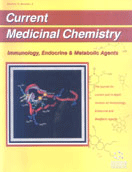Abstract
Both neuronal and cerebrovascular endothelial cell (EC) injury are intimately involved in the development of acute and chronic neurodegenerative disorders. Recently, this cellular injury has been shown to consist of two distinct pathways of programmed cell death (PCD) that involve the degradation of genomic DNA and the exposure of membrane phosphatidylserine (PS) residues. In addition, it is the downstream cellular and molecular cascades that are considered to be the vital for the prevention and reversal of neuronal and vascular injury. These include free radical injury, the independent mechanisms of programmed cell death, loss of mitochondrial membrane potential, release of cytochrome c, DNA repair enzymes, changes in intracellular pH, endonuclease activation, cysteine protease generation, and MAP kinase activation. As a novel cytoprotectant, the agent nicotinamide can maintain DNA integrity and prevent the progression of membrane PS exposure. Immediate and delayed injury paradigms with nicotinamide also illustrate the ability of this agent to maintain mitochondrial membrane potential, prevent specific cysteine protease activation, and reverse a previously sustained insult. As an investigational tool, nicotinamide has assisted in identifying several of the cellular pathways that modulate ischemic neuronal and vascular injury and has offered new therapeutic strategies for central nervous system degenerative disorders.
 1
1








